Water
When I started backpacking in the 1950’s, I knew nothing about waterborne illnesses. But I did know to search out a water source to fill my army surplus canteen. Stagnant water was avoided like the plague. If a spring course couldn’t be found, then a downstream spot below a hundred feet of white water would do. I drank from these sources without any ill effects.
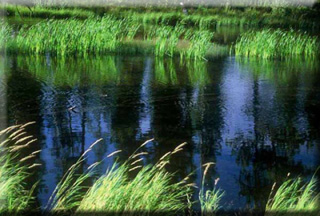
With my knowledge today, I would never dare to drink water from just any source unless I was dehydrated. The most pristine looking stream can be full of beaver-fever giardia and other bacteria and parasites. I still fill my water bottle from the two best sources, but I filter it before I drink it. Boiling water makes it safe, and water purification tablets are somewhat effective. Such water tastes bad to me. The inconvenience of these methods is such that I don’t drink enough fluids and tend to become somewhat dehydrated.
Last summer, while I was filming wildlife, I noticed two incidences of the wildlife polluting a stream. A bull moose urinated for about three to four minutes while he was knee-deep in one of the West’s most pristine spring creeks. His urine stream added to the flow. In another pristine spot, a trumpeter goose shook up his bottom and spewed runny goose poop into a Yellowstone Park stream.
You cannot judge the water’s purity by observing its clarity. These fecal contaminants introduce giardia, bacteria, and E coli.
Water sustains life. Active summer hiking requires about one liter per hour. That equates to seven liters per day. In cold weather water is essential for warmth. Four to five liters are required per day. Dehydration lessons the blood volume and makes it inefficient at warming you up. Finding and treating water while hiking requires both effort and time. I cut corners and seem to have a habit of drinking inadequate amounts.
Water contaminants come from agriculture, mining, septic systems, animals and viruses. Agricultural runoff includes pesticides, herbicides, and fertilizers. These cannot be treated by boiling, filtration, or chemicals. This source of water is unusable for drinking. Agriculture also includes cattle. Cattle feces end up in the water and can include E coli and giardia.
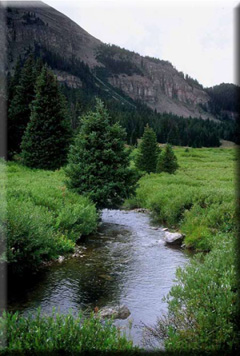
Mining ventures can place unwanted heavy metals and toxic chemicals in water. These cannot be removed by boiling or filtering. Avoid tailings run off. You must never seek water from a stream or a pond downstream from farms, ranches, or mines. This water may not even be safe after boiling.
The contaminants that are harmful but can be treated out are coliform bacteria, viruses, and cysts such as giardia and cryptosporidium. Other bacteria and protozoa can be harmful. None of these can stand three minutes of boiling.
Coliform bacteria exist in the intestines and get into water through fecal contamination. Some strains are lethal. Most cause intestinal distress, diarrhea, and discomfort.
Cysts are parasitic worms, protozoan life forms, and other parasites. In third world countries parasites can be serious. To be safe, filter and boil water when camping in tropical countries.
Here in the United States, giardia and cryptosporidium are common in the wilds. Both infect the intestines and part of their life cycle takes place inside the colon. Both are relatively large in size and filtering is effective in their removal. Cryptosporidium and giardia are excreted in the feces of humans and other animals in the form of cysts. These cysts are washed into the water. These cysts infect your intestines and cause diarrhea, abdominal cramps, bloating, gas, nausea, fatigue and weight loss. If you become infected, see a physician because these are treated with a prescription drug. Boiling doesn’t remove these cysts but it kills them.
Become familiar with locating clean water sources. In general, the best source is where a spring exists in the ground. This source is the least likely one to be contaminated. High country springs are better than valley springs. Mineral contamination is less likely the higher up you are.
Next, a fast running stream below a white water rapid may be okay. Avoid surface water and stillwater. These are more likely to be contaminated. If the water has a bad taste, suspect harmful minerals or algae and stay away from it.
On a good topo map, springs, intermittent streams, and streams are laid out. Explore these areas. Look for greenery high up in a canyon. Spring seeps are good places. Patience is needed to fill your bottle without scooping up sediment and debris.
A melting snow bank is another source. Avoid discolored areas because algae and other contaminants may have occurred.
Once the best water source is found, it still must be treated. I prefer to first filter it and then chemically treat it. If the best water around has discoloration and debris, pre-filter it with a bandana held around the bottle with a thick elastic band. A paper coffee filter will also work. This pre-filtration improves the life of your water filter. Next carefully filter this water with either your bottle filter or pump. Use care not to cross-contaminate filtered water with unfiltered. I then transfer this filtered water into another bottle and add an iodine tablet. It will be ready to drink in thirty minutes to an hour depending upon its temperature. The colder the water the longer it takes to chemically treat.
I carry a bottle filter and a plastic container. I always have one ready to drink while the other one is still under treatment. Simply put, the filter removes the bacteria and cysts, and the iodine kills the viruses. I have never experienced a water-related disease since I started treating in this way. But if I’m in a third world tropical area, I would substitute boiling for chemical treatment.
Filters work by separating the larger particulate matter from the water. The micron size of the filter lets only the water and viruses pass through. Filters should be maintained. Check the manufacturer’s suggestions. A soft tooth brushing can extend their life. Spare filters are a good backup.
Iodine tablets are inexpensive and easy to carry, but their shelf life is only good for a single season. Refresh them every three months.
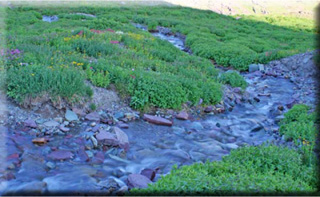
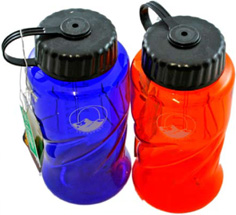
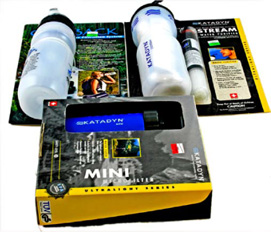
A wide elastic band and a clean handkerchief or bandana makes a good pre-filter set up. I then use a bottle filter because of its lightweight, trouble-free operation. A cracked O ring can make a pump inoperable.
Iodine tablets and boiling water leave a bad or flat taste. I like to add some dehydrated sports drink mix to the water. The taste is spiced up and needed electrolytes are added to improve the flavor of treated water..
An adequate supply of clean water is essential for hiking and camping. Knowing how to find it and how to properly treat it is a great preventative measure. Who wants to catch giardia? Who wants to be around the victim with the foul flatulence?
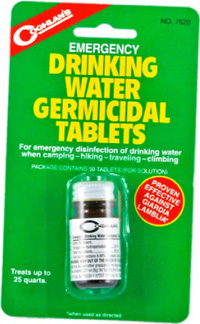
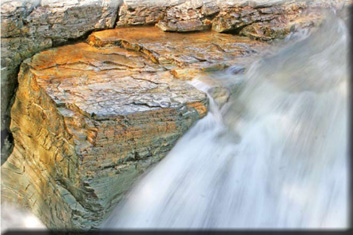
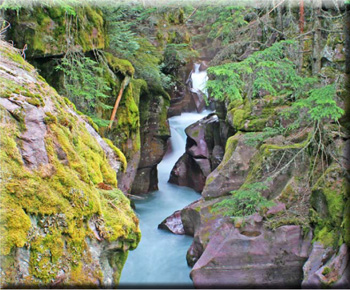
Camping Adventures • Dutch Oven Cooking • Sports Knots
Fly Tying • Freshwater Fishing • Fly Fishing

